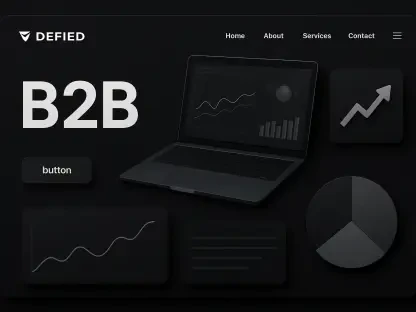Social feeds no longer behave like billboards; they behave like bustling search bars where shoppers type questions, compare options, and follow evidence, and that shift has forced brands to treat TikTok captions, Instagram bios, YouTube chapters, and Pinterest boards with the same care previously reserved for title tags and meta descriptions. Many practitioners have adapted quickly, yet their approaches vary: some build intent-first profiles that echo the language customers use, others chase engagement mechanics, and a growing group connects social assets directly to web content to compound visibility across platforms. This roundup brings together viewpoints from strategists, creators, SEOs, and performance marketers to map what actually surfaces in-platform and on Google—and how teams can ship processes that scale.
From Broadcast to Discovery: Why Social SEO Now Decides Who Gets Found
Brand marketers describe social channels as discovery engines rather than distribution lanes. The consensus points to a simple behavior shift: people search inside social apps because results feel visual, conversational, and immediately useful. Product demos, side-by-side comparisons, and short explainers often answer questions faster than a long article, so users now start with TikTok, Instagram, YouTube, or Pinterest and only later move to Google for depth or verification. Practitioners stress that this behavior reshapes planning; the caption’s first sentence and on-screen text now play the role of a headline, while the profile acts as a mini home page.
Search-focused SEOs see a compounding effect. When a post ranks in a platform’s search, it can drive branded queries and clicks to a site, which then raises engagement and conversion. Meanwhile, Google increasingly surfaces public social posts for product, how-to, and local queries. Analysts in retail and SaaS report that this loop reduces acquisition costs because discovery and validation happen in one continuous journey. However, they caution that the loop only spins when content maps to clear intent and when brand entities—names, handles, bios—stay consistent across platforms.
Building a Findability Engine That Connects Social Platforms to Google
Social Media SEO, Defined: Intent-Matched Profiles, Captions, and Metadata—Not Trend-Chasing
Content strategists frame social media SEO as aligning language and structure with the phrases users type into social search bars. They underline four levers: consistent naming across profiles, natural-language keywords in bios and captions, descriptive alt text, and formats that earn meaningful engagement—watch time, saves, shares, and substantive comments. The shared view is that these inputs tell both social platforms and Google what the content covers and who it serves.
Performance-minded voices draw a bright line between durable findability and fleeting virality. Trend-led sounds and meme formats can spike reach, but they rarely create dependable search entry points. Teams that prioritize search intent report steadier traffic, cleaner analytics, and more qualified sessions on-site. The practical recommendation is to chase resonance over novelty: answer specific questions, title assets like a helpful result, and favor clarity over cleverness.
The Two-Way Flywheel: Social Discovery Fuels Web SEO, and Web Content Powers Social Search
SEO leads at mid-market brands describe a two-way exchange. On one side, social discovery seeds brand queries; users click through or later Google the name, meet robust pages, and convert. On the other side, web content supplies the material for social search: tutorials become short-form videos, FAQs become carousels, and guides become pins. This repurposing multiplies entry points and reinforces topical authority because users encounter consistent explanations in multiple formats.
Editorial teams add that embedding social posts into relevant pages increases time on page and strengthens associations between the site and profiles. When a how-to article includes a short video demo and a transcript, both the page and the post gain context. Practitioners emphasize using official embed methods and adding rich text—captions, summaries, alt text—so crawlers can parse meaning. The flywheel works best when every asset, whether social or web, connects to a clear next step.
Platform-Specific Advantage: How Instagram, TikTok, YouTube, Pinterest, and Facebook Actually Index Content
Specialists who focus on Instagram advise treating captions like mini answers, not keyword lists. They recommend consistent handles, clear bios, image or reel alt text, and captions that echo how users phrase problems. For Facebook, Page completeness still matters: category, services, hours, and a concise About section help both internal and external search locate the brand. These fundamentals, they argue, are quieter than trends but more durable.
Short-form experts on TikTok stress that on-screen text is indexed alongside the caption, so the target keyword should appear in both. They also highlight auto-captions for accessibility and parsing, plus a strong opening that addresses the searcher’s need within seconds. Video-first practitioners on YouTube point to titles that read naturally, descriptions that add context and related phrases, chapters that map subtopics, and playlists that cluster depth. Pinterest specialists recommend board names with specific intent, pin descriptions written in everyday language, and product-rich pins to carry structured details such as price and availability. Across all platforms, public visibility and crisp categorization are repeat themes.
Signals That Matter Most: Research Habits, Accessibility, Engagement Quality, and the Pitfalls to Avoid
Researchers and social analysts argue that lightweight but ongoing research wins. The advice is to mine autocomplete suggestions, scan high-performing posts for phrasing, read comment threads for real questions, and use native analytics to identify formats that drive watch time and saves. These habits surface intent in plain language, which then feeds profile bios, hooks, and captions without resorting to stuffing.
Accessibility advocates note that alt text, captions, and transcripts are not only inclusive but also act as clarity signals. Clear descriptions help algorithms align content with queries, which in turn helps users find helpful answers. Meanwhile, experienced creators warn against common traps: repetitive keyword blocks that hurt readability, inconsistent naming that confuses search systems, and overreliance on hashtags. The emerging consensus ranks engagement quality—saves, shares, watch time—above hashtag volume, while still using a few precise tags for categorization.
From Principles to Practice: Tactics, Workflows, and Plays You Can Ship This Quarter
Campaign operators favor an embed-first mindset to connect social attention to site outcomes. They place TikToks, reels, and pins inside relevant blog posts or hub pages using official embeds, then surround them with short summaries or transcripts. This approach improves time on page, ties social proof to products or guides, and gives search engines broader context. Retail and DTC teams report that a behind-the-scenes video inside a production article or a quick tip inside a troubleshooting guide keeps visitors engaged and nudges them toward action.
Content leaders recommend building from one “pillar” into platform-native variants. A long YouTube tutorial can become a 30-second TikTok demo, an Instagram carousel, and a Pinterest idea pin, each with captions tuned to how users search inside that platform. Collaboration with creators appears frequently in these playbooks. When briefs center on user intent and allow authentic execution, creator content tends to earn saves and shares, which strengthens both in-platform search placement and the brand’s broader footprint. Finally, teams point to topical hubs on the site as glue: evergreen pages that organize related guides, products, and a handful of social embeds help both users and crawlers navigate depth.
The Road Ahead: Converging Search Ecosystems and the Moves That Future-Proof Your Content
Observers across e-commerce, media, and SaaS described a landscape where social search and web search converged, and where quality beat gimmicks. They noted that platforms had improved autocomplete, indexed on-screen text, and elevated creator answers, while Google had pulled more public social posts into results when they helped satisfy intent. Successful teams had responded with consistent profiles, intent-matched captions, and accessible media that algorithms could parse.
Practitioners also agreed that structured organization had mattered more than ever. Profiles, playlists, chapters, boards, and hub pages acted as indexing aids, signaling focus and helping users move deeper. The most durable gains had come from aligning language with user phrasing, embedding social proof beside substantive web content, and measuring saves, shares, watch time, and session depth rather than chasing raw reach. For next steps, the guidance pointed toward a steady cadence: refresh bios to match current queries, produce platform-native derivatives of proven pages or videos, embed standout social posts into hubs with transcripts, and keep research loops running via autocomplete, comments, and analytics. Suggested reading had included platform help centers on accessibility and search features, and case studies that broke down how embeds and topical hubs influenced engagement and conversions.









